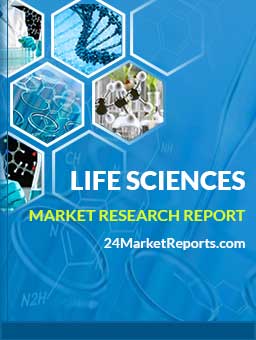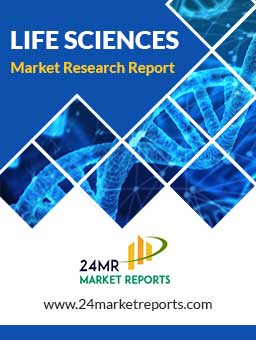Active pharmaceutical ingredients or APIs can be defined as the chemicals used to manufacture pharmaceutical drugs. They are generally manufactured through a variety of processes that include chemical synthesis, fermentation processes, recombinant DNA, etc.
Microbial fermentation APIs are secondary metabolites produced by micro-organisms such as fungi and actinomycetes. The micro-organisms are capable of converting inexpensive carbon sources (starch, glucose, sucrose, etc.) and nitrogen sources (soybean flour, cotton-seed flour, peptone, etc.) into highly valuable API's or key intermediates (such as amino acids, vitamines, antibiotics) in liquid or solid media under certain growth conditions (nutrients, temperature, PH, oxygen supply).
Microorganisms that are typically used within the pharmaceutical industry include: prokaryotes such as Bacteria (e.g. Escherichia coli, Staphylococcus aureus) and Streptomycetes (e.g. Streptomyces spp, Actinomyces spp), eukaryotes such as Filamentous Fungi (e.g., Nigrospora spp, Aspergillus spp,) and Yeast (e.g. Saccharomyces cereviciae, Pichia pastoris).
Microbial Fermentation APIs Market aims to provide a comprehensive presentation of the global market for Microbial Fermentation APIs, with both quantitative and qualitative analysis, to help readers develop business/growth strategies, assess the market competitive situation, analyze their position in the current marketplace, and make informed business decisions regarding Microbial Fermentation APIs. Microbial Fermentation APIs Market contains market size and forecasts of Microbial Fermentation APIs in global, including the following market information:
- Global Microbial Fermentation APIs Market Revenue, 2018-2023, 2024-2029, ($ millions)
- Global Microbial Fermentation APIs Market Sales, 2018-2023, 2024-2029, (K Units)
Global top five Microbial Fermentation APIs companies in 2022 (%)
The global Microbial Fermentation APIs market was valued at US$ 30220 million in 2022 and is projected to reach US$ 33170 million by 2029, at a CAGR of 1.3% during the forecast period. The influence of COVID-19 and the Russia-Ukraine War were considered while estimating market sizes.
The major players in global Microbial Fermentation APIs market include Merck, Ajinomoto, HGPF, etc. China is the main market, and occupies about 50% of the global market. Antibiotics and Amino Acids are main types, with a share over 60%.
We surveyed the Microbial Fermentation APIs manufacturers, suppliers, distributors and industry experts on this industry, involving the sales, revenue, demand, price change, product type, recent development and plan, industry trends, drivers, challenges, obstacles, and potential risks.
Total Market by Segment:
Global Microbial Fermentation APIs Market, by Type, 2018-2023, 2024-2029 ($ Millions) & (K Units)
Global Microbial Fermentation APIs Market Segment Percentages, by Type, 2022 (%)
- Antibiotics
- Amino Acids
- Vitamin
- Nucleotide
- Organic Acid
- Alcohol
- Biological Products
- Hormone
Global Microbial Fermentation APIs Market, by Application, 2018-2023, 2024-2029 ($ Millions) & (K Units)
Global Microbial Fermentation APIs Market Segment Percentages, by Application, 2022 (%)
- Hospitals
- Research & Academic Laboratories
- Pharmaceutical & Biotechnology Companies
Global Microbial Fermentation APIs Market, By Region and Country, 2018-2023, 2024-2029 ($ Millions) & (K Units)
Global Microbial Fermentation APIs Market Segment Percentages, By Region and Country, 2022 (%)
- North America
- US
- Canada
- Mexico
- Europe
- Germany
- France
- U.K.
- Italy
- Russia
- Nordic Countries
- Benelux
- Rest of Europe
- Asia
- China
- Japan
- South Korea
- Southeast Asia
- India
- Rest of Asia
- South America
- Brazil
- Argentina
- Rest of South America
- Middle East & Africa
- Turkey
- Israel
- Saudi Arabia
- UAE
- Rest of Middle East & Africa
Competitor Analysis
The report also provides analysis of leading market participants including:
- Key companies Microbial Fermentation APIs revenues in global market, 2018-2023 (Estimated), ($ millions)
- Key companies Microbial Fermentation APIs revenues share in global market, 2022 (%)
- Key companies Microbial Fermentation APIs sales in global market, 2018-2023 (Estimated), (K Units)
- Key companies Microbial Fermentation APIs sales share in global market, 2022 (%)
- Further, the report presents profiles of competitors in the market, key players include:
- Merck
- Ajinomoto
- HGPF
- Huaxing
- North China Pharmaceutical
- Topfond
- DSM
- Tianyao
- CSPC Pharma
- Northeast Pharm
- Lukang Pharmaceutical
- Luwei Pharmaceutical
- Jiangshan (DSM)
- Outline of Major Chapters:
- Chapter 1: Introduces the definition of Microbial Fermentation APIs, market overview.
- Chapter 2: Global Microbial Fermentation APIs market size in revenue and volume.
- Chapter 3: Detailed analysis of Microbial Fermentation APIs manufacturers competitive landscape, price, sales and revenue market share, latest development plan, merger, and acquisition information, etc.
- Chapter 4: Provides the analysis of various market segments by type, covering the market size and development potential of each market segment, to help readers find the blue ocean market in different market segments.
- Chapter 5: Provides the analysis of various market segments by application, covering the market size and development potential of each market segment, to help readers find the blue ocean market in different downstream markets.
- Chapter 6: Sales of Microbial Fermentation APIs in regional level and country level. It provides a quantitative analysis of the market size and development potential of each region and its main countries and introduces the market development, future development prospects, market space of each country in the world.
- Chapter 7: Provides profiles of key players, introducing the basic situation of the main companies in the market in detail, including product sales, revenue, price, gross margin, product introduction, recent development, etc.
- Chapter 8: Global Microbial Fermentation APIs capacity by region & country.
- Chapter 9: Introduces the market dynamics, latest developments of the market, the driving factors and restrictive factors of the market, the challenges and risks faced by manufacturers in the industry, and the analysis of relevant policies in the industry.
- Chapter 10: Analysis of industrial chain, including the upstream and downstream of the industry.
- Chapter 11: The main points and conclusions of the report.






 Industry Market Size
Industry Market Size SWOT Analysis
SWOT Analysis Industry Major Players
Industry Major Players Revenue Forecasts
Revenue Forecasts Historical and Forecast Growth
Historical and Forecast Growth Profitability Analysis
Profitability Analysis
























